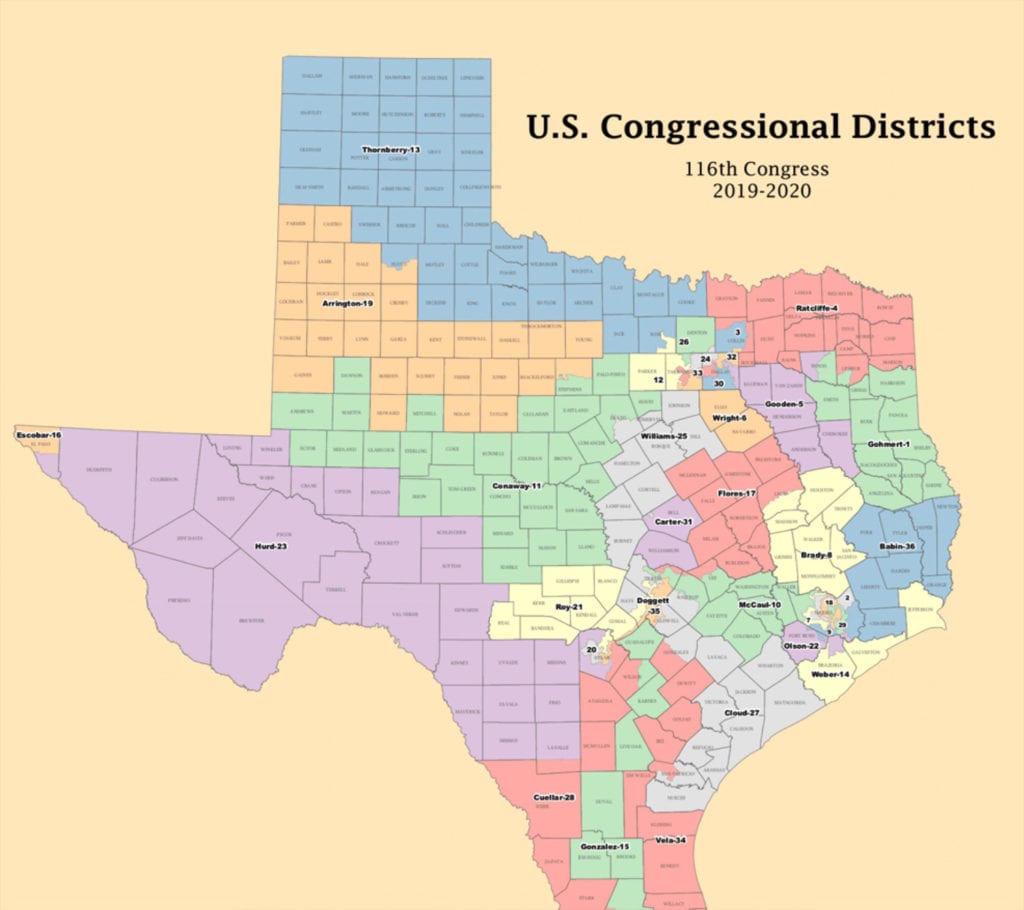Who Represents The Texas Panhandle at the Federal Level?
The entire State of Texas is represented by Senators John Cornyn (On the Ballot in Nov 2020) and Ted Cruz (Reelected in 2018).
The Texas Panhandle is part of the 13th Congressional District and is represented by Congressman Mac Thornberry, whose district runs from the top of the Panhandle and south to the northern edge of the Metroplex.
As you go further into the South Plains, including Lubbock, that is the 19th Congressional District and is represented by Congressman Jodey Arrington.
Why might you need to contact your U.S. Senator or Representative?
While Members of Congress welcome and regularly receive feedback from constituents on a variety of issues, some of the primary reasons a constituent may reach out to their Senators or Representative include:
- Getting assistance with the U.S. Passport process
- Assistance with immigration or citizenship issues, if encountering an issue while traveling abroad,
- Obtaining letters of recommendation and assistance in the application process for any of the U.S. Military Service Academies,
- Requesting the donation of a U.S. flag to recognize specific accomplishments
- Applying for student internships in the District or in Washington, DC
- Obtaining assistance in scheduling official tours when visiting Washington, DC, including special events, White House tours, tours of the U.S. Capitol, etc.
Federal elections are conducted every two years. There are 100 U.S. Senators (2 from each state) who serve 6 year terms with one third of the Senate seats in the country on the November ballot every two years – always even numbered years. There are currently 435 Members of the U.S. House of Representatives, each serving two-year terms.
When the U.S. Census is conducted every ten years, the allocation of Reps in Congress shifts among the states to balance changes in population. Ex. Based on the last census, Texas went from having 32 Reps to 36 Reps due to population growth. It’s expected that the upcoming Census could result in the addition of 2 or more additional seats in Texas.
Each of the seats in the U.S. House must represent roughly the same number of citizens – which is an increasing challenges for rural districts like our own because, as the Texas population booms, existing lines have to be redrawn to expand rural districts to include the necessary number of citizens. There is a possibility that the three districts currently serving West Texas, the Panhandle and the South Plains could be combined in redistricting into two districts, eliminating one of the seats that serves our area to add an additional seat in one of the urban centers where population growth outpaces that of our area. Each State legislature controls the redistricting in their respective State.
So, when new Census data is finalized, our legislators in Austin are charged with drawing the new lines for our State Senate, State Representatives, and U.S. Representatives. This process is a long and highly politicized process. It is, without a doubt, one of the most important reasons that rural areas need strong representation in Austin so that we don’t lose our Representation to urban areas. Just think about the fact that there are Representatives in places like Houston whose districts are measured in city blocks. Our Congressional District, the 13th District of Texas spans more than 40,000 square miles, making it larger in area than thirteen different states.
Read about some Fun Facts about our Government.
